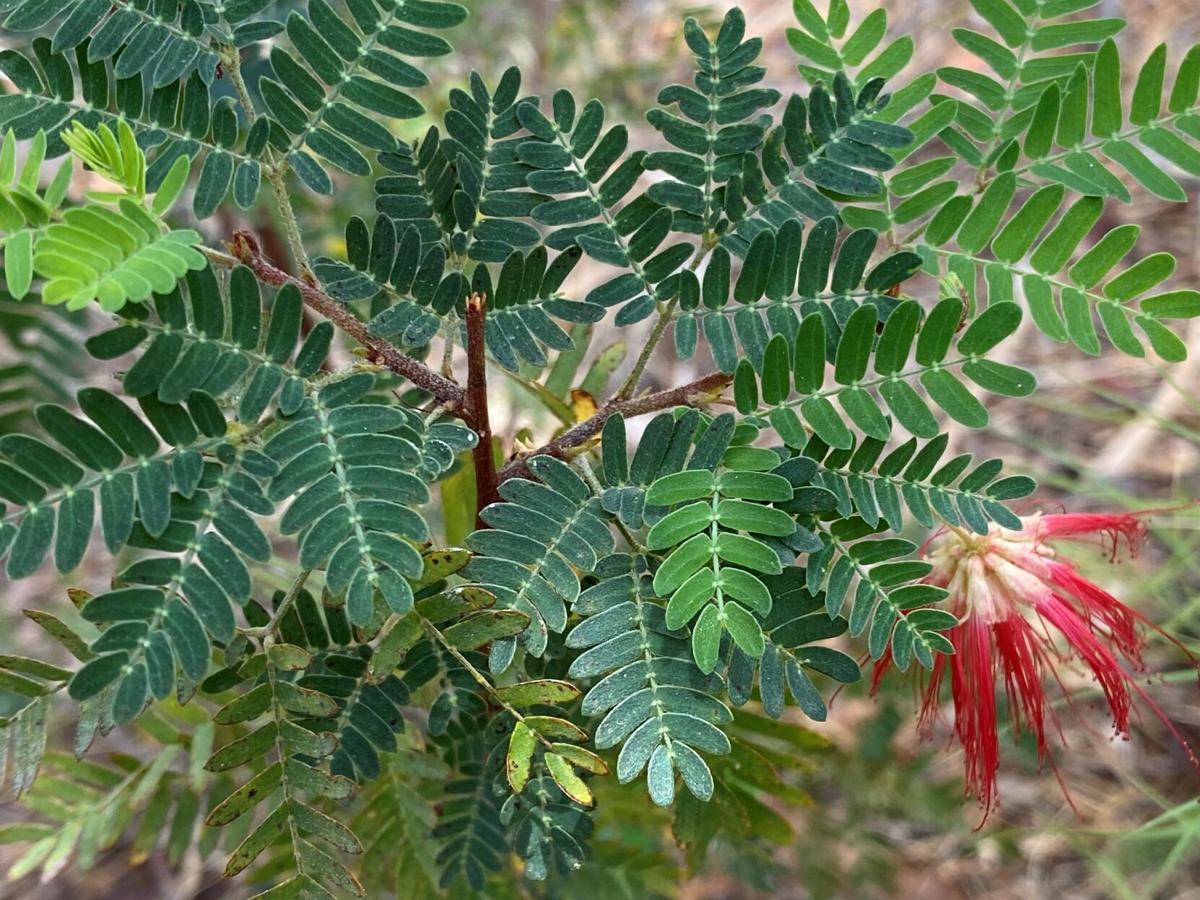Plants are stuck where they grow. That means they need to be adaptable. Whether they are enduring rain or shine, cold or heat, high temperatures and drought, or other extremes, plants must try to survive as best they can.
In our desert, the biggest limitations for plant survival are heat and drought. Our native plants have developed some amazing strategies to help them survive our desert climate extremes; these adaptations have created some of the most unique and fascinating plants in the world. Here are a few of their strategies.
Leaf adaptations: Plants transpire water through pores in their leaves called stomata. Desert plants try to avoid having large leaves, since plants can lose a lot of water that way. Thus many desert plants have either very small leaves or no leaves at all. For example, cacti have turned their leaves into spines, which shade their trunks from the sun and protect the stems. Palo verde trees have no leaves most of the year, and can photosynthesize through their trunks, as can creosote and ocotillo. Plants like fairy duster, mesquite, and many others have very small leaves and fewer stomata in their leaves to minimize moisture loss. Brittlebush grow smaller leaves in the summer than in the winter. Some plants also have waxy coatings (jojoba) or little hairs (ironwood, brittlebush) on their leaves to protect them from sun and moisture loss. Certain plants also fold their leaves up in the hottest part of the day to minimize the amount of sunlight falling on them, or grow leaves in a configuration that orients them away from direct sun (jojoba).
People are also reading…
Waxy coatings: As mentioned above, these can be on leaves or on the trunks (as in cacti). The wax acts as a moisture barrier and also shades from the sun. These coatings also often are a lighter color, which reflects more of the sunтs rays. Brittlebush and quailbush leaves, for instance, are a very light grayish green. Creosote bush leaves are another example of leaves that are waxy and small. Succulents of all types have waxy coatings on their leaves, stems and other parts to protect the water they have stored there.

The light-colored waxy coating on the leaves of this Texas ranger helps keep moisture in.
Fast-growing extensive roots: Some plants, like cacti, grow very shallow extensive roots that grow quickly after rains and can extend several feet beyond the stem of the plant. This is one reason why transplanting cacti is quite stressful, and why they need a couple of years to recover from it. Our native trees, in particular mesquites, grow very deep root systems. Many native trees aggressively seek out water with their roots.
Water storage: Cacti store water in their stems or trunks (which are protected by long, painful spines and a waxy coating), and certain cacti and other succulents have underground tubers which store water. Some of these plants can look completely dead on the surface, but spring back after rainfall.
Water management: Our native mesquites have an amazing trick: they can , and then move that water back up the root system as needed. This is called hydraulic redistribution.
Life cycle adaptations: Some of our perennial plants (like ocotillo) exhibit dormancy during the hottest and driest months (much like plants from colder climates being dormant in the winter). Many native annuals (for example wildflowers such as the УлшжжБВЅ poppy or desert lupine) complete their life cycle prior to the heat of summer in a strategy known as drought avoidance.

This red bird of paradise has folded its leaves to reduce the amount of sunlight falling on them during the heat of the day. This helps the plant reduce water loss through its leaves.
CAM photosynthesis: This metabolic pathway allows plants to photosynthesize while the sun is shining, but keep their stomata closed until night falls and temperatures are cooler. In normal photosynthesis, plants need to keep their stomata open to take in carbon dioxide and release oxygen and water (the products of photosynthesis). This of course results in a lot of water loss. A plant using the CAM pathway only opens its stomata at night, letting in CO2 and letting out oxygen and water. The CO2 is stored inside the leaf for use during the day. This special mechanism allows them to use only one-tenth of the water that regular plants do for photosynthesis. Agave, hesperaloe and yucca use this metabolic pathway.
Relationships with other plants: Some plants are very competitive, and discourage others from growing near them. Creosote bushes, for example, , a phenomenon known as allelopathy. As mentioned above, mesquites sequester water deep underground where only they can access it. This prevents plants with shallower roots, such as grasses, from growing under them. However, mesquites and palo verde trees also act as nursery plants form saguaro cacti, providing them with shade and nitrogen.
For more gardening information and articles on gardening in the УлшжжБВЅ area, !
Do you have any gardening topics you'd like to see covered in the УлшжжБВЅ Garden Guide? Email me at dheusinkveld@tucson.com with your suggestions and questions. Thanks for reading!






















